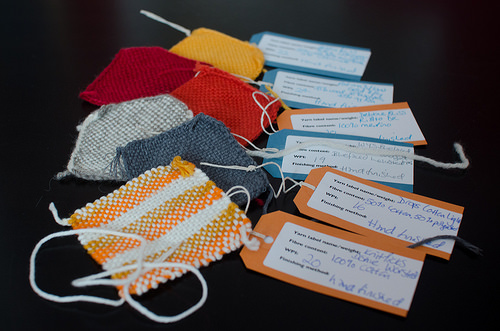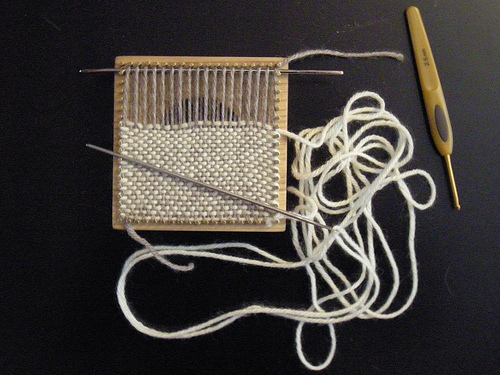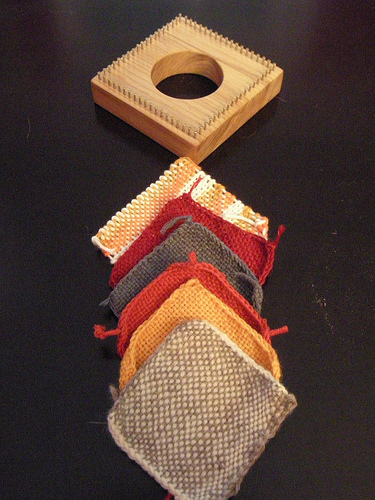Woven sample squares: the start of a study in finishing

I’ve recently been watching Know your wool, a free craftsy video series about wools. As part of the series Deborah talks about how she goes about sampling yarns. And I thought that it seemed like a good idea. Up until now I’ve either sampled them in a small weaving project, or not sampled at all and hoped for the best. I’ve also recently been considering a more scientific method of determining the best finishing for a yarn/combination of yarns, as this is something that, Meg aside, few people seem to blog about but can make such a huge difference to the finish of the project.

I decided to buy a small square loom for this purpose, and so have been busy weaving sample squares in the yarns I’ve got in my stash — both already used and new, awaiting a suitable project. The loom is somewhere close to being 10dpi, so some of my finer yarns are a bit sparse, whilst some of the thicker yarns are a bit squished, but I’m still hoping it’ll help me out.

Having made my first 6 squares — the first not so successfully, the next 5 much better - I used a combination of these instructions with the finishing from this video - I figured it was time to finish them. Especially as one of the squares are needed to determine how to finish weaving project 49, and one will help me decide how to use the lovely undyed blue-faced leicester wool.

Here’s the method I have used for hand wash finishing:
* a little bit of normal clothes washing detergent
* water at 36 degrees C (the temperature you’d bath a baby at - I bought a baby bath thermometer for this purpose)
* some agitation of the item — nothing too vigorous
* rinsing in a sink of cold water
* squeezing in the hands — not wringing but squeezing
* rolling in a towel to get excess water out
* drying flat unpinned on a blanket
Each sample, once dry, has been labelled which these things on the front:
* Yarn label name/weight
* Fibre content
* WPI
* Finishing method
And on the back:
* Projects used in
* Notes

To get the WPI value I’m using my yarn llama — a tool I got for Christmas which is an inch across its underbelly (technically it is an alpaca, but yarn llama trips off my tongue better)
(Apologies for the photo quality, there have been a mixture of cameras used to get these photos due to the demise and replacement of my d80)